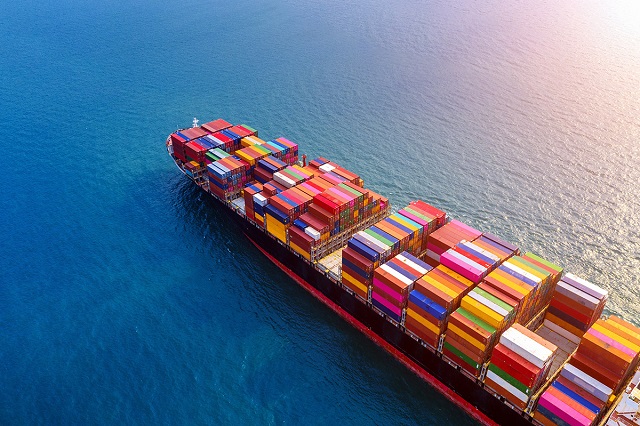Turkey’s textile and ready-to-wear industry, a cornerstone of its manufacturing base and a major source of jobs, is experiencing diverging fortunes in 2025. While exports of textiles and raw materials managed modest growth in the first seven months, apparel shipments fell further, squeezed by global competition, rising costs at home, and softer demand in key markets.
Data from the Istanbul Textile and Raw Materials Exporters’ Association (İTHİB) shows textile and raw material exports rose 1.7 percent year-on-year to $6.6 billion between January and July, accounting for 4.2 percent of Turkey’s total exports. Yet July’s performance revealed fragility, with exports dipping 1.4 percent compared with the same month in 2024.
By contrast, ready-to-wear exports slid 3.8 percent to $15 billion in the same seven-month period, down from $15.6 billion a year earlier. The decline has accelerated through the year: shipments were down 6.5 percent in January–May, 6.2 percent in the first four months, and 7.5 percent in the first quarter alone. Analysts warn that without reforms, a sector that once employed more than one million workers could lose further global competitiveness.
Turkey Textile & Apparel Exports – Jan–Jul 2025
Total Exports
- Textiles & Raw Materials: $6.6 bn (+1.7%)
- Ready-to-Wear: $15 bn (–3.8%)
- Combined Share in National Exports: 9.6%
Top Markets
- Growth: Africa +21.6% ($899m), Asia & Oceania +30.3% ($483.7m, +81% in July)
- Decline: USA –1.3%, Germany –2.3%, Belarus –16%, Russia –18.7%
By Product Group
- Technical textiles: $1.36 bn (+5.2%)
- Woven fabrics: $1.34 bn (–0.3%)
- Yarn: $1.29 bn (+4.6%)
- Denim fabric: +19.8% (highest growth)
- Knitted fabrics: –8.7%
- Home textiles: –1.3%
- Fibers: +12.1%
Industry Strain
- Capacity utilization: Textile –4.8%, Manufacturing –2.2%
- Employment: 913,000 (down from 989,000 in Aug 2024)
- Job losses: 45,900+ since last year; closures: 2,659 companies
Challenges
- Production costs 40–60% higher than Bangladesh, Vietnam, India
- Global demand slowdown & geopolitical instability
- Urgent calls for tax, energy and export support
Outlook
- Textile sector targets $12 bn exports in 2025
- Total textile & apparel production forecast $80 bn+
Gains in New Markets
One bright spot has been the diversification of textile exports. Shipments to Africa climbed 21.6 percent to $899 million in January–July, while exports to Asia and Oceania surged 30 percent to $483.7 million, including an 81 percent year-on-year jump in July. Egypt, Morocco, and Czechia ranked among the fastest-growing destinations, while shipments to the United States, Germany, Belarus, and Russia contracted.
“This growth in Africa and Asia is encouraging, but it cannot fully offset weakening demand in Europe and the U.S., where price sensitivity is very high,” a senior exporter told Reuters.
Product Breakdown
Technical textiles led gains, up 5.2 percent to $1.36 billion, driven by demand from Morocco, Czechia, and the United Kingdom. Yarn exports grew 4.6 percent to $1.29 billion, while denim fabric stood out with nearly 20 percent growth.
Woven fabrics, the second-largest category, slipped 0.3 percent to $1.34 billion. Knitted fabrics fell 8.7 percent, home textiles 1.3 percent, while fibers rose 12.1 percent. The uneven performance highlights resilience in technical products versus pressure on traditional apparel-linked categories.
Strain on Industry and Jobs
Beneath the trade figures, the sector’s structural challenges are evident. Capacity utilization in textiles fell 4.8 percent in the 12 months through June, more than double the decline across overall manufacturing.
Employment continues to shrink: the combined textile and apparel workforce fell to 913,000 by May 2025, from nearly 990,000 a year earlier. Sector associations report more than 45,000 job losses and over 2,600 company closures in the past year alone, warning total losses could exceed 80,000 by year-end without intervention.
Rising Costs and Competitiveness Gap
Industry executives cite soaring costs as their most urgent challenge. Energy, labor, and financing expenses have climbed sharply, while Turkey’s managed exchange rate has eroded export competitiveness. Sector studies estimate Turkish apparel costs are 40–60 percent higher than rivals in Bangladesh, Vietnam, India, and North Africa.
Trade analysts say nearly half of apparel export losses stem from reduced access to Russia and Middle Eastern markets due to geopolitical tensions. Around 30 percent reflects weaker consumer demand in Europe, while the remainder results from competition with lower-cost producers.
Calls for Support
Exporters are urging government support in the form of tax relief, energy subsidies, reforms to the EU Customs Union, and new export incentives. They warn that without structural reforms, Turkey risks losing its long-standing role as a leading global apparel supplier.
Despite the challenges, textile exporters remain cautiously optimistic. After closing 2024 with $11.5 billion in exports, the sector is targeting $12 billion for 2025. Broader textile and apparel production is projected to exceed $80 billion, though much depends on whether global demand steadies in the coming months.
“The numbers show both our resilience and our vulnerability,” an İTHİB board member said. “Turkey has the capacity and know-how, but without competitive costs and supportive policies, our role in global supply chains will remain under threat.”






